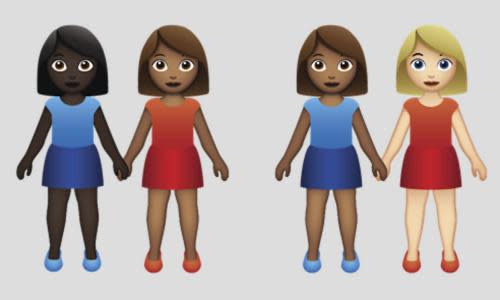How to fight racism using science

It seems we can’t move for comments about race dominating our media landscape, be it about an actor formerly known as a princess, or by an actor previously unknown to anyone outside of his famous acting dynasty. These are fractious times, and such debates appear to be increasing in frequency. But there are some fights for which you can arm yourself in advance – and when the argument is about race, the weapon of choice is science.
Racism is a prejudice that has a longstanding relationship with science. The invention of race occurred in the age of empires and plunder, when men of the emerging discipline of science classified the people of the world, mostly from their armchairs. Carl Linnaeus is the father of biological taxonomy, having invented the system that we use today: genus and species – Homo sapiens. He was also a central figure in the emergence of scientific racism too, alongside Kant, Voltaire and a host of other European men.
Classifications were based primarily on skin colour, some on a handful of skull measurements, and they also came with some shoddy value judgments: Linnaeus had the people of Africa as lazy and “governed by caprice”; Native Americans were “zealous and stubborn”; East Asians were haughty, greedy, and “ruled by opinions”. Voltaire believed that black people were a different species. All of these taxonomies were inherently hierarchical, with white Europeans always on top.
In the 19th century, Darwin’s half-cousin Francis Galton and others tightened their scientific arguments for race though, as Darwin noted, no one could agree on how many races there actually were, the range being between one and 63. Galton was an amazing scientist, and a stunning racist. The most delicious irony about him is that the field he effectively established – human genetics – is the branch of science that has demonstrated unequivocally that race is not biologically meaningful. Modern genetics clearly shows that the way we colloquially define race does not align with the biology that underpins human variation. Instead, race is a cultural taxonomy – a social construct. This doesn’t mean it is invalid or unimportant, nor does it mean that race does not exist. Humans are social animals, and the way we perceive each other is of paramount importance. Race exists because we perceive it.
No country, people, political power or border is permanent. The only true indigenous Brits were not even our own species
Racism seems to be making a comeback in public life: the prime minister has a well-stocked back catalogue of racist remarks, most notably describing Congolese people as “piccanninies” with “watermelon smiles”. Antisemitism is a defining issue for the 21st-century Labour party. Sport has always suffered from racist fans, and in 2018, bananas were thrown on to pitches at black footballers such as Arsenal’s Pierre-Emerick Aubameyang, as they were routinely 30 years ago. The England cricketer Jofra Archer was subjected to racist abuse in a Test match in New Zealand in November.
We all know someone who has casually racist opinions: the misattribution of elite athletic success to ancestry rather than training, that east Asian students are naturally better at maths; or that Jews are innately good with money. Racism may be back, so get tooled up, because science is no ally to racists. Here are some standard canards of prejudice, and why science says something different.
Skin in the game

What we see with our eyes is the merest fraction of a person. But humans are a highly visual species, and skin colour is the primary factor in allocating race. This idea is modern though, only becoming the primary classifier during the so-called Age of Enlightenment. Modern genetics reveals a much more complicated – and fascinating – picture.
Lighter skin is, at least partially, an adaptation to less sunny skies, as a means of protecting us from folate deficiency. Homo sapiens originated as an African species, but that doesn’t necessarily mean that we were ancestrally dark-skinned, nor that everyone was the same colour. Some of the differences we can see and measure between populations are local adaptations to evolutionary pressures such as food availability and disease. Similarly, genes for lighter pigmentation have been selected by an evolution away from the equator. But the palette of skin colour within the African continent is far greater than anywhere else, meaning that a simplistic model of selection based on exposure to the sun only explains a fraction of that diversity. There are 1.3 billion Africans, 42 million African Americans. Not only are these huge numbers, but the people in question are more diverse genetically than anyone else on Earth. And yet westerners refer to all of them as “black”. This is a scientifically meaningless classification, and one that is baked into western culture from five centuries of scientific racism. Stereotyping based on pigmentation is foolish, because racial differences are skin deep.
These lands are your lands

“England for the English” warbled Morrissey in his song The National Front Disco. Now that Mozza has given apparent support to For Britain, a political party even Nigel Farage thinks is full of “Nazis and racists”, it’s no longer clear the lyrics were ironic. Although Morrissey denies he is a racist, the sentiment is an old racist refrain. In July last year, President Trump suggested that if four elected US congresswomen didn’t like it in the US, they should go back to where they came from. Three of them were born in the United States and one is a Somali-born American citizen. Meanwhile, Trump’s paternal grandparents were German immigrants, his mother Scottish-born, his first wife Moravian, his third, Slovenian. It is never clear where the benchmark for indigeneity lies.
Indigeneity is a tricky concept. The British Isles have been invaded throughout their history: 1066 was the most recent hostile conquest, but before that, we were occupied by Vikings, who followed Angles, Saxons, Alans, and dozens of other tribes. The Romans ruled for a while, with conscripts not from Rome but from all over their empire, including Gaul, the Mediterranean and sub-Saharan Africa.
About 4,500 years ago, Britain was populated primarily with farmers who had European ancestors. DNA taken from the bones of the long dead suggests they were probably olive-skinned, with dark hair and brown eyes.
Family trees are matted webs, and all the lines of our ancestry get tangled after a few generations
The Beaker folk arrived in Britain about 4,400 years ago, and again according to ancient DNA, within a few centuries had replaced almost the entire population. We don’t know how or why, whether it was violence, disease, or something else.
Before them there were darker-skinned hunter-gatherers, who had been there a few thousand years. Then it all gets a bit foggy. The earliest evidence of British humans is in the crumbling coastline of Happisburgh in Norfolk, where size nine footprints of an unknown species of human were set in soft stone 900,000 years ago.
No country, people, political power or border is permanent. The only true indigenous Brits were not even our own species. So, when racists say “England for the English”, or when they talk about indigenous people, I do not know who they mean, or more specifically, when they mean. They probably don’t either.
Pure blood

White supremacists are obsessed with DNA. I spend time lurking in some of the nastiest corners of the internet, partially so that you don’t have to, but also to track their conversations about ancestry. Racist online cesspits such as Stormfront and 4Chan and 8Kun are flooded with thousands of posts about racial purity and ancestry-testing products. Occasionally, these commercial kits reveal previously unknown ancestry from people that white supremacists loathe. White purity is the key idea within white supremacy, and reactions are often conspiracy-fuelled (“the companies are owned by Jews”), or just absurd: “When you look in the mirror, do you see a jew [sic]? If not, you’re good,” which somewhat undermines the point of the tests.
There are no purebred humans. Our family trees are matted webs, and all lines of our ancestry get tangled after a few generations. All Nazis have Jewish forebears, all racists have African ancestors. Non-racists often think that their ancestry is somehow pure too, and this can be bolstered by misinterpreting commercial genetic ancestry kits. But no matter how isolated or wholesome you think your family tree is, it is a node on a tangled bank, linked directly to everyone else on your continent after only a few centuries, and everyone in the world after a couple of millennia.
Genealogy and genetic genealogy are not perfectly aligned, and due to the way DNA is shuffled during the production of sperm and egg, much is cumulatively lost over the generations. What this means is that you carry DNA from only half of your ancestors 11 generations back. You are genetically unrelated to people from whom you are actually descended as recently as the middle of the 18th century. You are descended from multitudes, most of whom you know nothing about, and many of whom you have no meaningful genetic relationship with.
Black power

The last white man to win the 100m final at the Olympics was Allan Wells in 1980, a year when the US boycotted the event. This was also the last time white men competed in the final, five in total. For many, this forms the basis of a long-standing assumption that black people – and more specifically African Americans, Jamaicans or Canadians – have a biological advantage for explosive energy sports.
Unfortunately, elite sportspeople are an abysmal sample on which to make generalisations about populations – they are already wonderfully freakish outliers. The sample size is hopeless, too: the total number of athletes that have competed in the 100m Olympic final since Wells took the gold is 58. Five of them were African, and not from the west African countries from where the enslaved were taken. By this metric, Africans are exactly as successful as white people in the 100m since 1980.
The argument that informs this misguided idea is that centuries of slavery have resulted in selection for explosive energy genes (about which we know very little). This is also a total nonstarter, for many reasons. Most significantly, we can look for the signals of evolutionary selection in African Americans since the beginning of transatlantic slavery, that is, genes that have proliferated in that population. A 2014 study of the DNA of 29,141 African Americans showed no signs of selection across the whole genome for any trait in the time since their ancestors were taken from their African homelands.
But for the sake of argument, let’s pretend that genes were selected that related to power and strength. Why then do eastern Europeans dominate weightlifting, yet are absent from sprinting? Why do African Americans dominate in boxing, but not wrestling? Where are all the black sprint cyclists? Why is it that in the 50m freestyle in swimming in the whole history of the Olympics, the number of African American finalists is… one? None of these facts align with the slavery explanation for African American dominance in the 100m.
The transatlantic slave trade also imported millions of West African people to South America. The number of South Americans of any ancestry to have competed in the 100m finals? Zero.
The point is this: sprinters in the Olympics, or indeed any elite sportspeople, are not a dataset on which a statistician could draw any satisfactory conclusion. Yet it is precisely the data on which extremely popular racial stereotypes are based. Elite athletes deserve better praise than the belief that they have auspicious ancestry.
• How to Argue With a Racist by Adam Rutherford is published by Orion (£12.99). To order a copy go to guardianbookshop.com. Free UK p&p on all orders over £15

 Yahoo News
Yahoo News 
